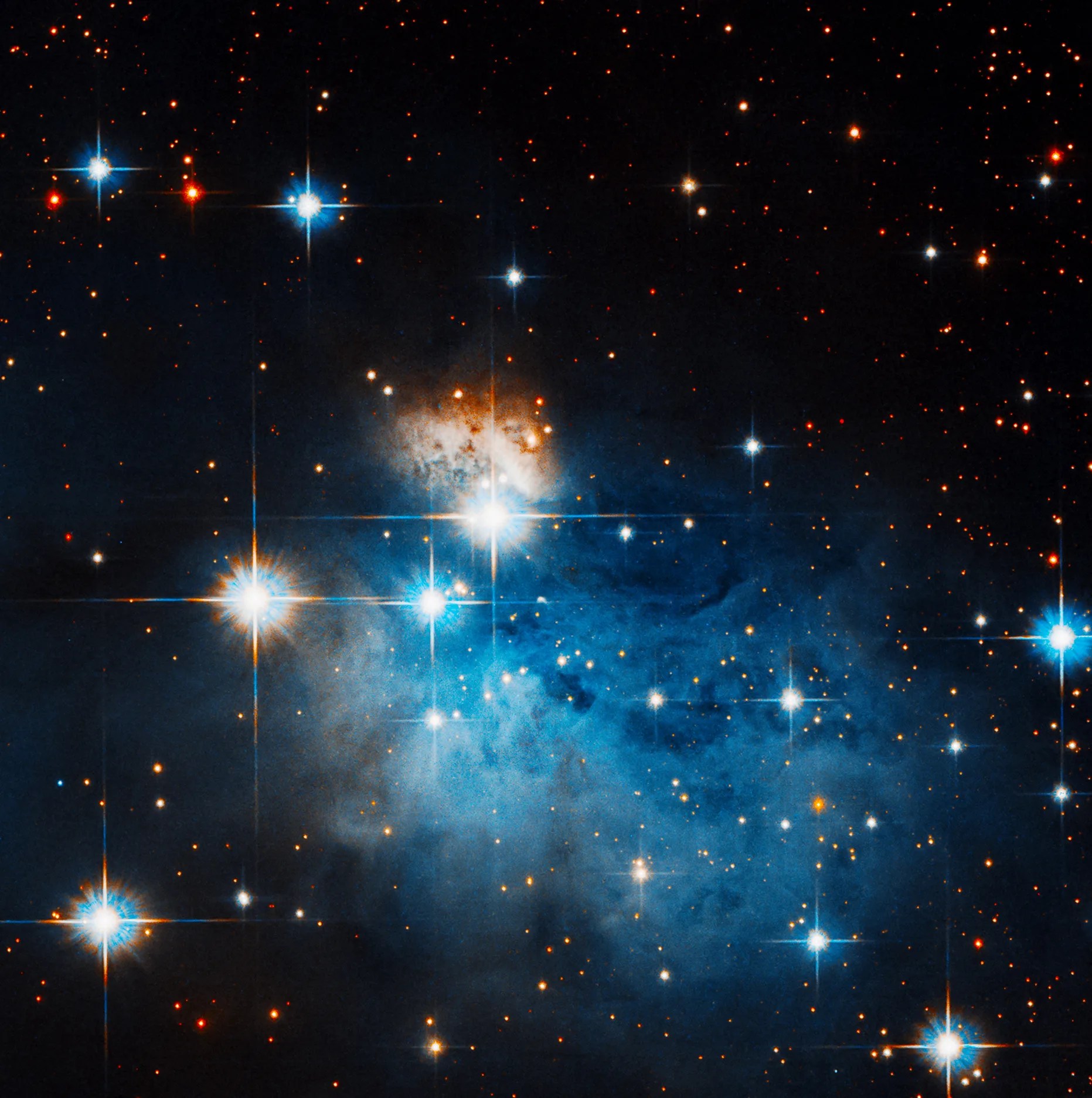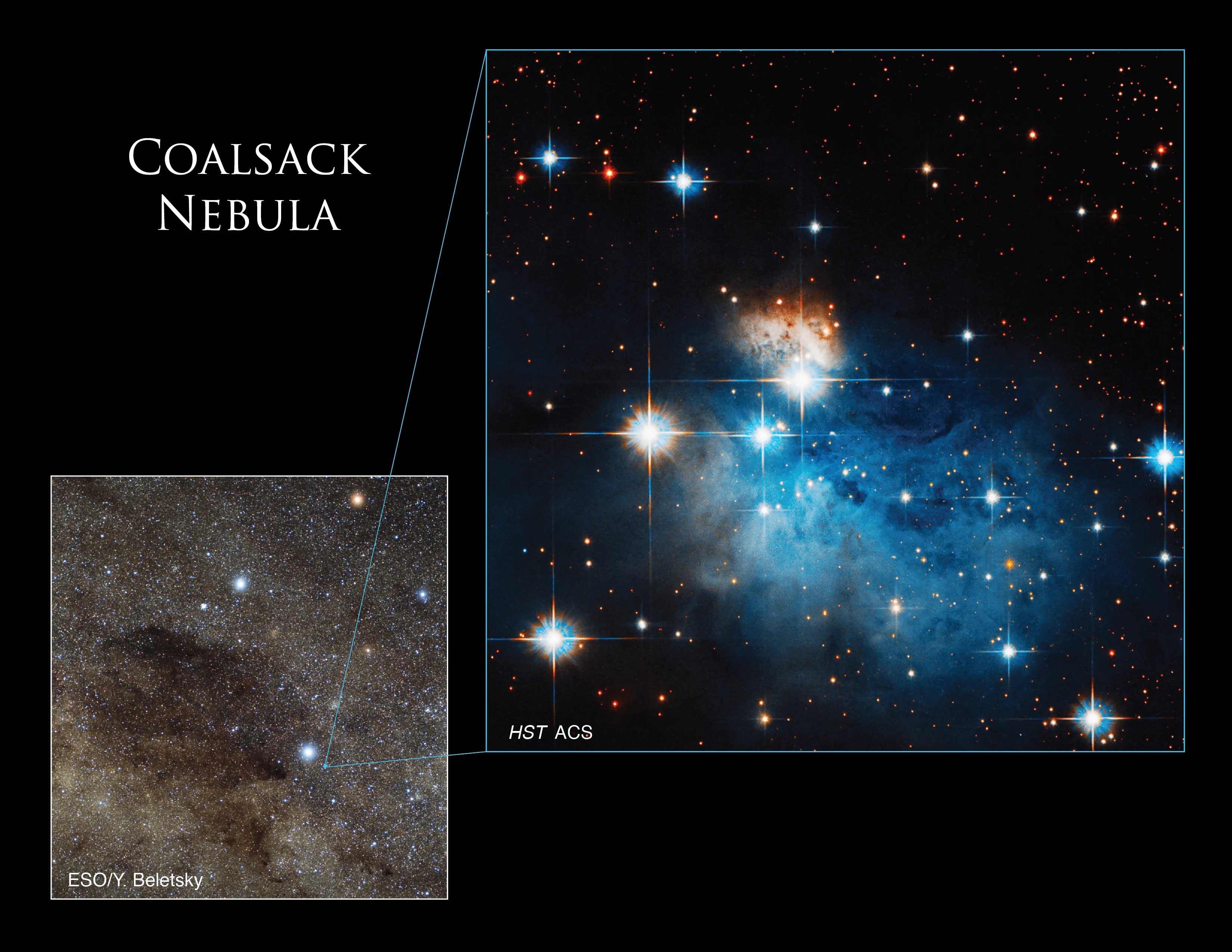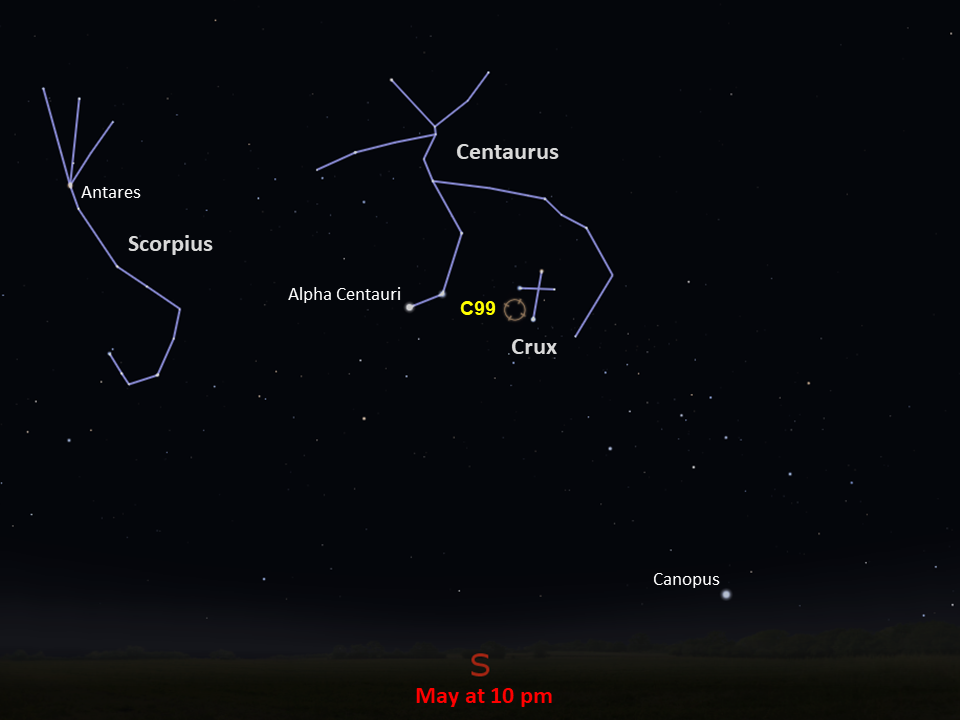Caldwell 99
Visible to the unaided eye as it obscures part of the Milky Way, dark Caldwell 99 is better known as the Coalsack Nebula.
Distance
600 light-years
Apparent Magnitude
Not Applicable
constellation
Crux
object type
Absorption or Dark Nebula

This stunning image captures a small region on the edge of the inky Coalsack Nebula, or Caldwell 99. Caldwell 99 is a dark nebula — a dense cloud of interstellar dust that completely blocks out visible wavelengths of light from objects behind it. The object at the center of the image is a (much smaller) protoplanetary nebula. The protoplanetary nebula phase is a late stage in the life of a star in which it has ejected a shell of hydrogen gas and is quickly heating up. This stage only lasts for a few thousand years before the protoplanetary nebula’s central star reaches roughly 30,000 Kelvin. At this point, the central star is producing enough energy to make its surrounding shell of gas glow, becoming what’s known as a planetary nebula.

The observations that comprise this image were made using Hubble’s Advanced Camera for Surveys in visible and infrared wavelengths. Astronomers took these observations to learn more about the evolution of protoplanetary nebulae into planetary nebulae.
Caldwell 99 is a very prominent object in the southern night sky. On a clear night, it can be spotted easily with the naked eye as a dark patch, void of stars, next to the Southern Cross in the constellation Crux. It is easiest to spot in the Southern Hemisphere during the autumn. (Northern Hemisphere observers will want to be positioned near the equator and look for it in the springtime.)
Having been viewed by stargazers in the Southern Hemisphere for millennia, Caldwell 99 has no discoverer, but Europeans first learned of it from Spanish explorer Vicente Yáñez Pinzón in 1499. Caldwell 99 is located approximately 600 light-years from Earth and is about 100 light-years across.

Glossary
Dark or Absorption Nebula - A dense cloud of interstellar dust that completely blocks out visible wavelengths of light from objects behind it.
Planetary Nebula - An expanding shell of gas around an aging or dying Sun-like star, cast off by the star.
Explore Hubble's Caldwell Catalog
The following pages contain some of Hubble’s best images of Caldwell objects.

Caldwell 1
Also known as NGC 188, this group of stars formed from a large cloud of gas making the stars roughly…

Caldwell 2
This shell of gas is expanding outward, away from the dying star within.

Caldwell 3
This barred spiral galaxy was first spotted by British astronomer William Herschel in April 1793 in the constellation Draco.




